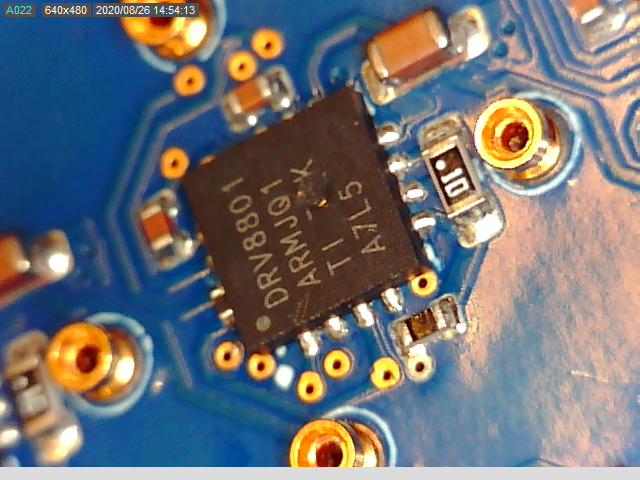We have seen some DRV8801 'blow up' or show this hole on top of them. This image has been taken with a USB Microscope.
I am wondering if anybody has seen this before and/or knows what could be causing it.
We have a few of them like this, and they always blow up in exactly the same location.
We have been using them in this application for about 6 years now, and noticed this for the first time.
In terms of configuration, we have: 64 of these connected on a PCB in an 8x8 array, driving various motors.
The setup runs at 28V, and drives around 2A for pulses that are about 100ms long.
A 5 second period may see up to 8 of those pulses, but there is normally a minimum of 30 second gap between those 'on 5 seconds'. More normally, the gap is several minutes.
Is this a thermal issue? We know that the DRV8801 has a built-in thermal cut off, so should hopefully cut off things before this happens, but obviously, you never know.
Keen to hear your thoughts/ideas.



